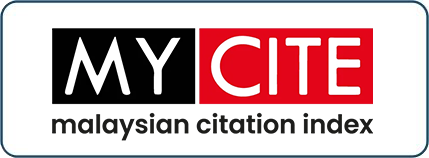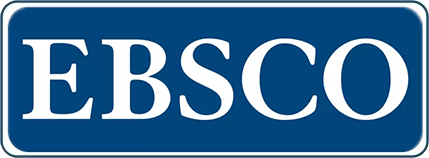Penerokaan Konsep Al-Tawriq dalam Pencairan Aset Wakaf
Exploration of the Concept of al-Tawriq in Waqf Asset Liquidity
DOI:
https://doi.org/10.33102/jfatwa.vol13no1.179Keywords:
Kecairan aset wakaf, perbandingan mazhab, kekurangan sumber dana wakaf, kewangan sosial Islam, al-TawriqAbstract
Al-Tawriq, which liquidity and sells waqf assets, is mooted by Mohd Daud Bakar (Global Syariah Figure) to address unproductive, idle, no commercial value and lack of funds for waqf assets, aimed at financing maintenance or development costs. Despite waqf assets need to be maintained as a fundamental principle of waqf, based on the hadith of the Prophet Muhammad, al-Tawriq is permissible according to ijtihad by Qadi's or syariah advisory panel. Therefore, the main purpose of this study is to explore to what extent, Islamic law allows the waqf assets to be liquidated by selling those properties. Using the qualitative method based on the analysis of the textual content of the classic Fiqh reference books, this study will explore the fundamental principles that allow this al-Tawriq method to be implemented. The study found that there are some basic principles that support al-Tawriq to be applied. The study proposes al-Tawriq to be used as one of the solutions to the development of waqf assets in Malaysia, aimed at enhancing the quality of waqf assets by establishing cash liquidity as a new source of funding for maintenance or development expenditure. It is important to ensure that waqf assets become more productive, beneficial for beneficiaries in their hereafter and have a positive impact on the development and economy of Muslims and humanity.
ABSTRAK
Al-Tawriq iaitu mencairkan dan menjual aset wakaf adalah antara solusi terkini yang diilhamkan oleh Mohd Daud Bakar (Tokoh Syariah Global) bagi menangani masalah aset wakaf yang tidak produktif, terbiar, tiada nilai komersial dan kekurangan sumber dana, bertujuan untuk membiayai kos penyelenggaraan ataupun pembangunan. al-Tawriq dibenarkan berdasarkan ijtihad semasa melalui keputusan Qadi ataupun panel penasihatan syariah walaupun pada asalnya aset wakaf perlu dikekalkan sebagai prinsip asas wakaf berdasarkan hadith Rasulullah SAW. Oleh itu tujuan utama kajian ini adalah sejauhmana keharusan syarak dalam membenarkan aset-aset wakaf boleh dicairkan dengan menjual harta-harta tersebut. Dengan menggunakan kaedah kualitatif berdasarkan analisis kandungan teks buku-buku rujukan Fiqh klasik, kajian ini akan meneroka prinsip-prinsip asas yang membenarkan kaedah al-Tawriq ini dilaksanakan berasaskan perbandingan mazhab. Akhir kajian mendapati, terdapat beberapa prinsip-prinsip asas yang membenarkan al-Tawriq ini dilaksanakan antaranya aset wakaf tidak lagi berfungsi seperti tujuan asal diwakafkan. Kajian ini mengusulkan al-Tawriq digunapakai sebagai salah satu solusi kepada pembangunan aset-aset wakaf di Malaysia bertujuan untuk meningkatkan kualiti aset wakaf dengan mewujudkan kecairan tunai sebagai sumber dana baharu kepada perbelanjaan penyelenggaraan ataupun pembangunan. Ianya penting bagi memastikan aset wakaf menjadi lebih produktif, dapat dimanfaatkan oleh penerima manfaat, dan jariah pahalanya boleh berjalan, berterusan dan memberi impak yang positif kepada pembangunan dan ekonomi umat Islam dan manusia sejagat.
Downloads
References
Abi Bakar Muhammad bin Abdullah (undated). Al-Qabasu fi Sharh Muwatta’ Ibni Anas. Beirut : Dar al-Kutb al-Ilmiah.
Ajil Jasim al-Nasyami (2009). Al-Tawriq wa al-Taskik wa Tatbiqatihima. Majma’ al-Fiqh al-Dawli : Munadhamah al-Mu’tamar al-Islami (19th Session : Emirate of Sharjah State of United Arab Emirates).
Al-Khassaf, Abu Bakar Ahmad Muhair al-Shaibani (tanpa tarikh). Al-Ahkam al-Awqaf. Kaherah : Maktabah al-Thaqafah a-Diniyah.
Camille Paidi (2014). The history of Sukuk.
Fuadah Johari, Mohammad Haji Alias, Muhammad Ridhwan Ab Aziz, Zurina Kefeli, Nursilah Ahmad, Kalsom Abd Wahab, Fauzi Abu Hussin & Patmawati Ibrahim (2015). “Identifying the potential of continuity in cash Waqf contribution : A descriptive analysis”. The Journal of Muamalat and Islamic Finance Research.. Vol 12 (2). Pp : 55-67.
Fuadah Johari, Wan Abdul Fattah Wan Ismail, Muhammad Aunurrochim Mas’ad, Abdullah Mohammed Ahmed and Idris Mukhtar (2017). “The Conceptual Framework of al-Tawriq and a Scholarly Discussion on the Liquidation (al-Suyulah) of Waqf Asset”. in Abdul Halim et al (Eds). Contemporary Issues and Development in Islamic Social Finance. Nilai : USIM PRESS collaboration with Centre for Islamic Philantropy and Social Finance (CIPSF), UiTM. (2)
Fuadah Johari (2017a) Al-Tawriq for Waqf Assets. YTI Brown Bag series. 12 July 2017. Dean Room. Faculty of Economics and Muamalat, USIM.
Fuadah Johari, Muhammad Ridhwan Ab Aziz, Wan Abdul Fattah Wan Ismail, Muhammad Aunurrochim Mas’ad, Abdullah Mohammed Ahmed (2017b). “Liquidating Waqf Assets And Future Framework of Al-tawriq”. In Syadiyah et al (Eds). e-Proceeding entitled ‘The 7th Islamic Economic System Conference 2017 (iECONS 2017) at Sundus Rotana Hotel Muscat, Sultanate of Oman.
Khairun Najmi Saripudin, (2013). Isu-Isu Syariah dalam Sukuk Musyarakah di Malaysia : Kajian terhadap Sukuk yang telah diterbitkan dari tahun 2005 hingga 2010. Unpublished Master Thesis : Depertment of Fiqh and Usul, Academy of Islamic Studies, Universiti Malaya.
Ibn Qudamah, Abdullah Ibn ahmad (1997). Al-mughni. juz 8. Riyadh: Darul ‘Alim Kutub.
Jalil, A. (2008). Waqf Instruments for Construction contract: An analysis of structure. The Journal of Muamalat and Islamic Finance Research (JMIFR), 5(1), 14.
J.N. D Anderson (1955). Islamic Law in Africa. Routledge.
Malik bin Anas (1991). Al-Muwatta . al-Nadwi (ed.). Vol. (3). Damsyik : Dar al-Qalam
Mohd Daud Bakar (2008). Al-Suyulah : The Islamic Concept of Liquidity.. In Essential Reading in IslamicFinance. Mohd Daud Bakar & Engku Rabiah Adawiyah Engku Ali (Eds.). Kuala Lumpur : CERT Publications Sdn. Bhd.
Mohd Daud Bakar (2017). Liquidity in Islamic Finance and Human Life. YTI Brown Bag Session Serries. 12 July 2017. Dean’s Meeting Room. Faculty of Economics and Muamalat. USIM.
Mohd Daud Bakar (2017a). Wakaf : Intrumen Keagamaan atau Kewangan?. Ucaputama. Muktamar Iqlimi Ke-5. Anjuran Institut Pengurusan Harta dan Kewangan Islam (IFWMI). 19 September 2017. Dewan Kuliah Fakulti Ekonomi dan Muamalat.
Mohd Zain Othman, (1982). Islamic Law with Special Reference to to the Institution of Waqf . Kuala Lumpur : Jabatan Perdana Menteri .
Mohammad Tahir Sabit (2006). Innovative Modes of Financing the Development of Waqf Property. Konvensyen Wakaf Kebangsaan organized by the Department of Awqaf, Zakat and Hajj. Kuala Lumpur.
Mu’jam al-Ma’ani al-Jamik – Mu’jam Arabi Arabi , <http://www.almaany.com/ar/dict/ar-ar> accessed at 22/12/2016
Majallah Majma’ al-Fiqh al-Islamiy al-Dawli , 178 (19/4). Mu’tamar al-Islamiy The Organization of the Islamic Conference, held at the 9th session of the tenth Emirate of Sharjah State of United Arab Emirates. 30 April 2009.
Muhammad Abu Zahrah (1971). Muhadarāt fi al-Waqf. Kaherah : Dar al-Fikr al-Arabi.
Mughniyah, Muhammad Jawad (2004). Fiqh Lima Mazhab. Masykur A.B, Afif Muhammad, Idrus al-Kaff (Terj). Faisal Abudan, Umat Shahab (Penyunting). ‘Al-Fiqh ‘ala al-Madzahib al-Khamsah’. Cet. 12. (Edisi Lengkap) Jakarta : Lentera.
Randi Deguilhem-Schoem (undated). The loan of Mursad on Waqf Properties. In A Way Prepared : Essays on Islamic Culture in Honor of Richars Bayly Winder. Farhad KAzemi & R.D. McChesney (Eds.). New York : University Press.
Razali Othman (2015). Institusi Wakaf Sejarah dan Amalan Masa Kini. Kuala Lumpur : Dewan Bahasa dan Pustaka.
R.D. McChesney (1991). Waqf in Central Asia : Four Hundred Years in the History of Muslim Shrine : 1480-1889. Princeton Legacy Library.
Ron Shahem, (2006). Law, Custom and Statue in the Muslim World : Studies in Honor of Aharon Layish. Leiden : Brill.
Wahbah al-Zuhaili (1996). Fiqh dan Perundangan Islam. Md Akhir Haji Yaacob et. al (Terj.) ‘al-Fiqh al-Islami wa-Addillatuhu’. Cet. 5. Selangor : Dewan Bahasa dan Pustaka.
Downloads
Published
Issue
Section
License
The copyright of this article will be vested to author(s) and granted the journal right of first publication with the work simultaneously licensed under the Creative Commons Attribution 4.0 International (CC BY 4.0) license, unless otherwise stated.















